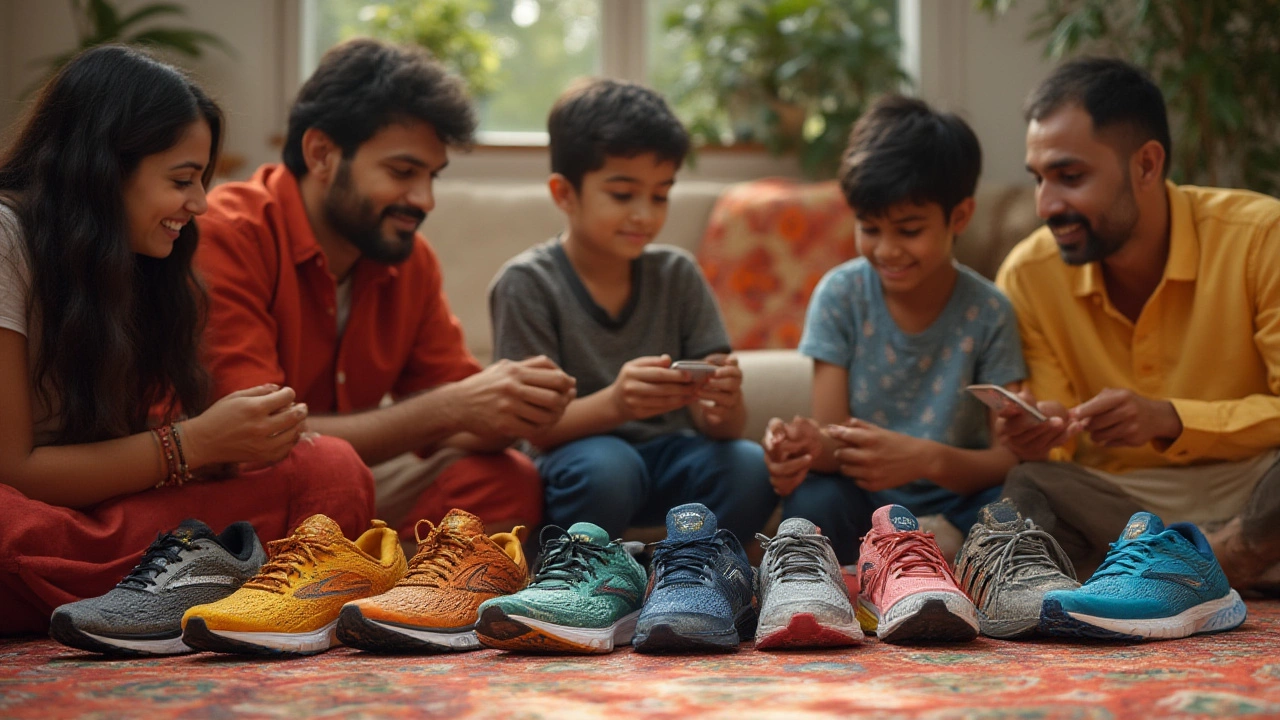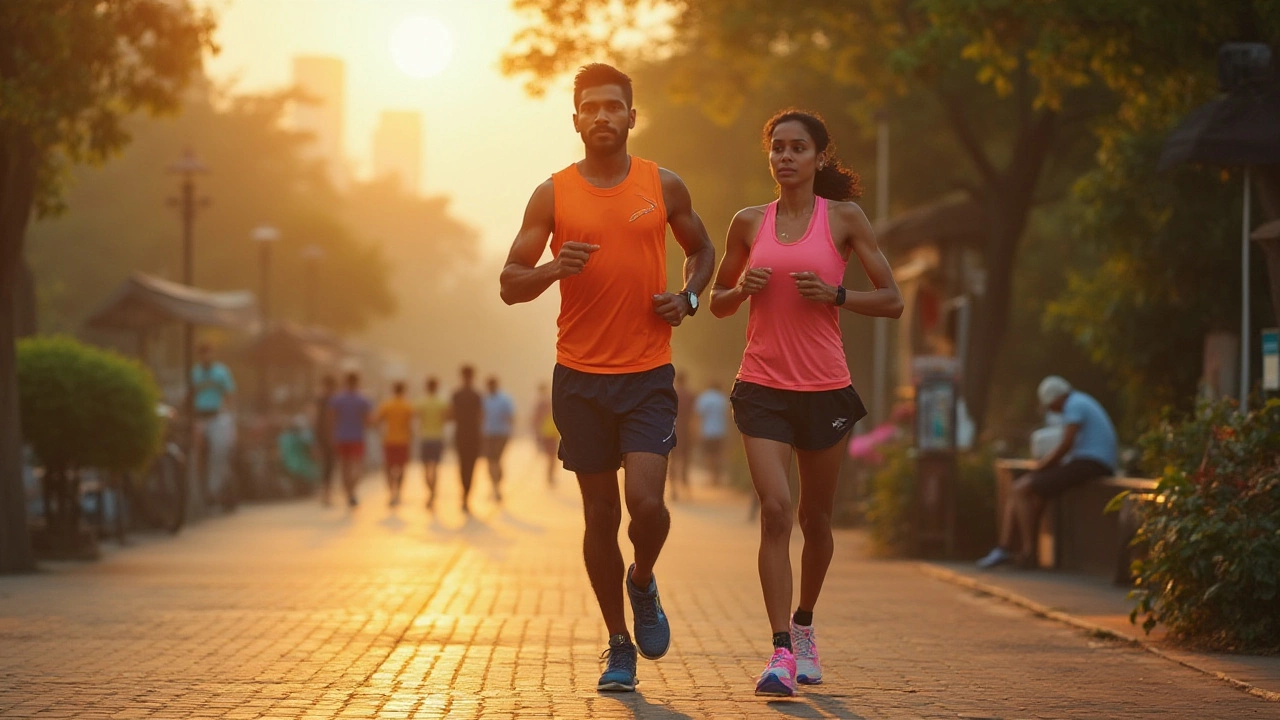The battle between Brooks and Hoka running shoes feels a bit like asking someone to pick between coffee and tea. Both brands stir up strong loyalty. Both have shaped serious running trends. Yet peel back the hype, and the real differences get lost in a fog of geek speak and flashy marketing. Here’s the truth: finding your best shoe isn’t about which brand is 'better' in some abstract way. It’s about which one matches your feet, your runs, and yes—your quirks.
The Big Differences: Cushioning, Fit, and Ride
Brooks: think classic with a tech twist. They’re known for a rounded heel, bombproof durability, and a focus on stability. If you’ve ever slipped your feet into the Brooks Ghost or the Adrenaline GTS, you probably noticed the signature step-in comfort. Brooks tends to use an EVA foam blend for their midsoles, leaning on their DNA LOFT and BioMoGo DNA tech. What does that mean for you? You get a cushy but responsive feel. The kind of shoe that absorbs the shock from long road runs, but is also nimble enough for some quick fartleks across Brisbane’s riverwalk.
Hoka (officially Hoka One One, pronounced 'ho-ka oh-nay oh-nay') goes for maximum cushioning. Not just cushy—a marshmallow level of soft. They brought the maximalist revolution to running in the early 2010s, and today, even everyday joggers know the Clifton, Bondi, and Arahi. The thick stack of foam isn’t heavy; Hokas are deceptively light. The rockered sole—think a slight curve upwards at the heel and toe—encourages you forward with every stride. That combination, plus the rolling feel, makes these shoes especially popular for long distances and leg-weary runners coming off of injuries.
Quick tip: If you’re a heel striker pounding out high mileage, Hokas can save your legs, but if you like ground contact and road feel, Brooks might suit you better. Both brands now offer stability versions for runners with flat feet or overpronation, so nobody’s left out.
Who Wears Brooks and Hoka? Runner Profiles and Real-life Feedback
It’s not just weekend runners or marathon junkies choosing between Brooks and Hoka. In recent years, you’ll spot doctors, posties, nurses, and tradies wearing both brands just for all-day comfort. But the biggest chunk of users is still runners—track kids, recreational joggers, and ultra-marathoners.
Brooks wearers tend to like structure. They want a secure heel, a locked-in midfoot, and a mesh upper that breathes well in Queensland’s humidity. Runners who clock relentless weekly miles, or have a history of niggly knees, trust the Adrenaline GTS for its stable but not stiff ride. One interesting stat from a 2024 Strava survey reveals that 1 in 4 runners logging over 30km a week preferred Brooks models for training blocks. That’s a big thumbs up for long-haul reliability.
Hoka fans are often runners recovering from injury, those with bigger bodies seeking more shock absorption, or people who move up to ultra distances. Clinical tests at the Queensland Sports Medicine Centre noted in 2023 that runners with a history of plantar fasciitis reported less morning soreness after switching to the Bondi. Many beginners gravitate towards Hoka’s plush feel, swearing it helps them run further before their legs fatigue. However, not everyone loves the high stack: some say it feels wobbly if you’re making quick turns or doing technical trail work.
If you’re training in the Brisbane summer, both shoes offer solid ventilation in recent models. But for trails, Brooks has the Cascadia while Hoka has the Speedgoat. Both are legends among trail runners, but they serve up very different rides—Brooks giving you ground connection, Hoka squashing out the rocks.

Long-term Durability, Maintenance, and Shoe Lifespan
Let’s get real: running shoes aren’t cheap. And pounding out several hundred kilometers a month means you want your investment to last. Brooks, for years, has had a reputation for bombproof durability. Most models clock 600-800km before the midsole loses its bounce or the upper blows out. Their outsole rubber—carbon in the heel, blown in the forefoot—really stands up to abuse on both asphalt and concrete. It’s almost a rite of passage in some running clubs to see how many ‘Ghosts’ you can wear through before retiring a pair.
Hoka’s maximal soles, while thick and pillowy, wear surprisingly well. The EVA foam is engineered to compress without quickly breaking down, but Hokas tend to show cosmetic midsole creases faster than Brooks. The average Hoka will last 500-700km, sometimes more if you’re light on your feet or using the shoes just for walking. Trail models like the Speedgoat have improved in the past two years—outsole rubber is now more aggressive and sticky, holding up great on the Mt Coot-tha trails, even in muddy spring. One point of caution: that oversized stack can tip over if you let your form get lazy going downhill.
Maintenance is a breeze with both brands. Mesh uppers air dry well after a rainy parkrun or a muddy slog. Both Brooks and Hoka don’t recommend tossing your shoes in the washing machine, but a soft brush and soapy water sorts out most stains. Rotate your shoes—a trick that stops hot spots and extends lifespan. If you can, keep a second pair for easy days or recovery runs. Your knees and hips will thank you, especially once you hit your 40s.
Price, Value, and Where to Score a Bargain
Neither Brooks nor Hoka falls in the ‘cheap’ category. Expect to pay between $200 and $280 AUD for flagship models in Brisbane stores. Outlets like The Athlete’s Foot, Rebel, or independent shops run regular sales, especially when the next version drops. Both brands have frequent mid-year refreshes, so you can snag the previous model for less (the changes are often subtle anyway).
Brooks tends to be slightly less expensive on average, with well-loved staples like the Ghost and Adrenaline holding their value but going on sale more often. Hokas, especially hits like the Clifton and Bondi, can command higher sticker prices—though late-season clearances aren’t rare. If you see a shoe model labeled ‘wide’ or ‘extra wide’, it usually goes fast, since both brands have a devoted fanbase among people with broad feet.
If you’re confused at a store, ask for a treadmill test or gait analysis. Brisbane Running Company, for example, nails this process. Don’t be shy—let them film and break down your stride. Trying both brands side-by-side is the best way to know if the rockered Hoka or traditional Brooks last will suit your arch and toe splay. Bring your own socks. Weirdly, the fit can change a lot just based on sock type, especially in the Queensland heat.
Savvy runners keep an eye on online deals from trusted retailers. Beware cheap knockoffs or too-good-to-be-true prices. Both brands have struggled with counterfeits, so buy from places you trust. Bonus: registered stores often have return windows if the shoe doesn’t work for you after a couple of jogs.

Making the Choice: Which Brand Wins for You?
If you search for recommendations online, you’ll get passionate essays for both Brooks and Hoka. But don’t let anybody else’s mileage rule your world. If you crave running shoes that feel natural and keep your legs happy after hours pounding Brisbane’s concrete, you’ve got to match your own body to the shoe’s science.
Here are a few fast rules:
- If you like classic fit, trusted stability, and a ‘normal’ level of cushion, give Brooks a try. Great for runners who want their feet to disappear under them, no drama.
- If you want to float above the tarmac, are injury-prone, or do a lot of recovery or ultra-distance runs, Hoka’s plush marshmallow ride might be your new mate.
- If you’re heavy-footed or have flat arches, try both brands’ stability models—Brooks Adrenaline GTS or Hoka Arahi. Flat-footed runners sometimes do better with firmer, more structured shoes, but personal testing is key.
- If you’re a trail junkie, the choice comes down to preference: Brooks Cascadia gives more road feel, while Hoka Speedgoat squashes roots and rocks under a wall of foam.
- Don’t stress about trends. Your knees don’t care about Instagram likes. They care about cushioning and support that fits you specifically.
The perfect shoe feels invisible. Not too tight, not too loose, no weird rubbing. When you test a pair, walk around the shop, jog if they let you, and trust your gut. A slight pressure or odd arch support now will only get worse by kilometer 25. If you’re shopping for your first real running shoe, lean towards comfort for your current level and goals, not the hype.
I’ve chatted with dozens of runners around Brisbane—from iron-willed marathoners to new couch-to-5k folks. Nobody agrees on one perfect brand. Some rotate Hokas for long runs and Brooks for speed work. Some stick with one loyal brand like a football team. It’s all about matching the shoe to your run, terrain, and, crucially, your body’s needs. No prize for guessing that companies will keep bringing new tech every year, but the only thing that matters is what keeps your feet happy mile after mile—whether you’re sloshing through a Gold Coast summer downpour or grinding out intervals past the kangaroo signs near UQ.
So, Brooks or Hoka? Your feet know the answer before your head does. Just make sure they’re comfy enough to tell you after your longest run.
